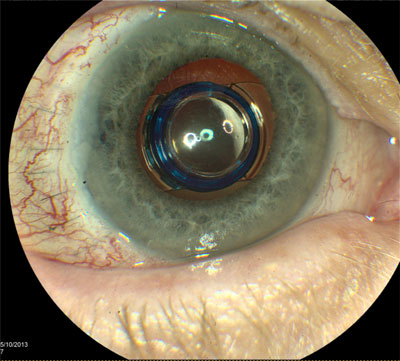
Dr. Steve Khachikian of Black Hills Regional Eye Institute explains, “The area that allows for central vision to perform everyday tasks such as watching TV, reading a book, and driving a car is called the macula. When the macula is destroyed by AMD, there’s essentially a hole in the vision resulting in the loss of “straight ahead” detailed vision. This causes those with macular degeneration to see around the periphery but not what is directly in front of them.”
Dr. Khachikian is helping patients with end stage AMD change this. He recently implanted two telescopes in patients with AMD and feels this FDA approved implant has promise.
This tiny telescope, about the size of a pea, is implanted inside one eye behind the iris, or colored part of the eye. The telescope projects images in your field of view onto healthy areas of the central retina outside of the damaged macula. The image is enlarged, reducing the effect the blind spot has on central vision.
Khachikian adds, “It does take months of rehabilitation to learn to use each eye differently. The non-telescope eye basically sees things in the periphery and the telescope eye sees things centrally.”
The implantable telescope does not treat macular degeneration or stop its progression. It is simply a vision aid. Currently, it is for people with macular degeneration in both eyes who have not had previous cataract surgery. The telescope is covered by Medicare.

